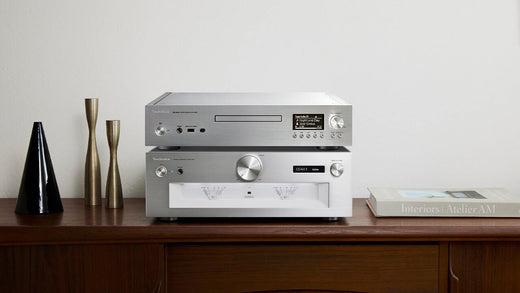The i-DAC 6 MK2 has the same petite form factor as the iHA-6 headphone amplifier, allowing them to be stacked if desired. Both chassis are CNC machined aluminum alloy with a sandblasted finish that helps to reduce external interference. At 3.6 kg (8 pounds), it's marginally lighter than the iHA-6. It measures 9.4 x 9.9 x 2.7 inches (240mm x 252mm x 69mm). The unit has a substantial feel that oozes build quality.
The front of the IDA-6 MK2 features, starting at left, a power button with a hearty click. For those with auditory and tactile obsessions, this is a satisfying feature. Next are three stacked buttons: Source (top), Timbre, and Line/Pre. (I glanced over at my desk to remind myself of the order and had to strain to see the small, pale lettering. Is that a design flaw? Perhaps. Next is a 3.95-inch AMOLED color display that shows off the newly designed graphical user interface. Kudos to Cayin for making the display large, colorful, and easy to read.
At the far right is an analog volume control. The volume knob, which is silver with a mirrored black center, doubles as a menu selector. Note that you have to have "pre out" selected to use the volume control with a headphone amplifier. To access the iDAC-6 MK2's seven PCM filters and 4 DSD filters, press the knob and turn the dial to "PCM filter" or "DSD filter."
Source input
To select your input source, press repeatedly to cycle through the following options: USB Audio, I²S , AES/EBU, Coaxial BNC, Coaxial RCA, and Optical. Your selected input will be prominently displayed in orange on the screen. Note that while the DAC is compatible with Mac and Windows, a device driver is required if you are using USB input of the DAC with Windows Operating System.
Timbre
When you switch between tube and solid state, a sphere on the left side of the display turned from warm red/yellow/orange to a cool blue. Note that it takes 15 seconds for the vacuum tubes to warm up to desirable working conditions. Note that the DAC will be muted during this brief period. The lighted power button will flash during this brief period.















